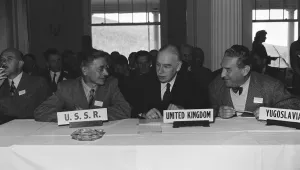International Security is America's leading peer-reviewed journal of security affairs.

Summary
Contrary to the conventional wisdom, military innovation can degrade a state’s military effectiveness as well as strengthen it. This article probes the assumed relationship between innovation and improved effectiveness, concluding that the risk is not always worth taking. Specifically, innovation is most likely to hurt military effectiveness when a state is already overextended—when its commitments outstrip its resources. This commitment resource gap leads the state to cannibalize existing capabilities without clear evidence of effective new ones.
Kendrick Kuo, "Dangerous Changes: When Military Innovation Harms Combat Effectiveness," International Security, Vol. 47, No. 2 (Fall 2022), pp. 48–87, https://doi.org/10.1162/isec_a_00446.
The full text of this publication is available in the link below.



